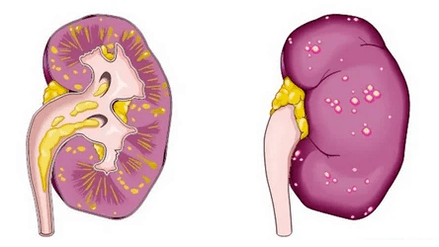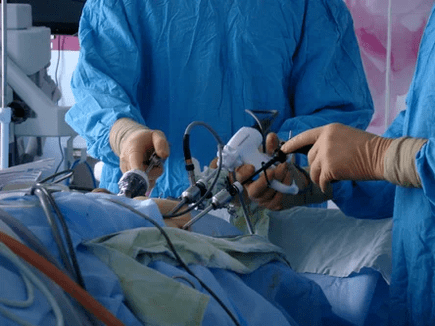
Many joking doctors call menopause male prostatitis.Such a disease is diagnosed in 20% of cases in men after forty years, in 70% - after sixty years and in 90% of cases after seventy years.The disease can occur in two forms: acute and chronic prostatitis.The disease must be treated, especially as it lends itself to therapy.But many men ignore unpleasant symptoms, leading to the development of many complications that become more difficult to cure.
The grounds of development
Acute prostatitis is an acute prostate pathology, which develops as a result of the inflammation in the organs as a result of the penetration of pathogens into the tissue.The disease is characterized by the appearance of swelling of the gland, the purulent content of the tissues.This leads to the emergence of many unpleasant symptoms, the function of the genitourinary system disorders.
There are many causes of acute prostatitis.In most cases, it triggersMicrobes pathrotage.Some microbes can exist in the body of a healthy person in the passive form of the skin or in the intestines.Under the influence of several factors, they are activated, penetrating the gland tissue and actively breeding there.Often the disease appears because of the STD, for example,Chlamydia, ureaplasmosis, gonorrheaetc.
A acute form of prostatitis occurs as a complicationurethritis.Microbes fall through the channel open into the urethra.In addition, often the cause of prostatitis is the spread of bacteria from other genitourinary systems.Often iron can be affectedDuring surgical manipulation, catheterization, diagnostic steps.
Since there is a large number of blood vessels in the prostate gland, the infection here can obtain blood flow with the presence of chronic pathology in the body, for example,, for example,Tonsillitis, bronchitis etc.If there isan anal crackMaybe the microbial penetration into the prostate with lymph current.
But infection does not always lead to the development of the disease.An unstable phenomenon on vessels -Kapal in the expanding pelvis areawith prolonged abstinence of sexual relations or a large number of.
The stagnant phenomenon is associated withLack of physical activity, persistent constipation, alcohol, varicose veins in the pelvic region, body hypothermia.
Classification
In urology, some form of pathology is distinguished, which is the stage of its development:
- Catarrhal formIt is characterized by the appearance of inflammation in the organs, changes in the epithelium.Over time, swelling of the glands occurs, the secret of the mucus collects in it, contributes to the development of the disease.
- Then focal suppuration appears.The disease enters the second stage (form) -A follicular form.The urinary tract is narrow or clogging, the secret stops normally prominent from the organ.PU can be released to the urinary tract, forming a purulent focus there.The gland cells change, the prostate continues to swell and increase size.
- Parenchymal formIt develops when the organ is truly inflamed, purulent infections develop in it.In the absence of therapy, small purulent foci joins into a large, growing abscess, which is often opened into the urethra, intestines and bladder.In some cases, it is possible to immediately develop this form of pathology when the infection penetrates the interstitial tissue of the organ with blood or lymph flow.

Symptom
The symptoms are clearly pronounced prostatitis.How many visible and significant signs will depend on the form (level) of the disease.The general signs of the disease include the following:
- Pain syndrome when eliminating urine;
- symptoms of intoxication;
- pain in the genital region;
- Frequent impetus to the toilet, especially at night;
- The release of the urethra is possible.
When prostatitis lasts in a man, the pain syndrome will spread to another area.This is due to the delivery of impulses by nerve endings.Urine extraction becomes very painful.Often at this stage, its sharp delay develops, which is considered a dangerous condition, as it can cause bladder rupture.
Symptoms in acute prostatitis continue to increase.Severe pain in water removal arises, body temperature increases.The prostate becomes increasing, dense and painful.Urina will muddy due to pus and mucus content.
In the last stage, the disease shows itself strongly.
Body temperature increases, fever and chills, loss of appetite, strong weakness, overall body fatigue.Urination can stop completely, while trying to go to the toilet, a man will experience severe pain.This condition is painful, the pain syndrome begins to spread throughout the pelvic area.A man could not find a place for himself, he had to lie down with a compressed body.If the inflammation spreads to the rectum, then the mucus will come out of the anus.Yellow-green mucus with blood mixture is released from the urinary tract.

This situation can causeSepsis, cystitis, pyelonephritis, chronic prostatitis, abscess.In this case, the hospital is immediate patient care and emergency.
Diagnostics
Because the symptoms of acute prostatitis in men appear quite bright, doctors can immediately suspect the pathology.But he needs to conduct a thorough examination.The rectal examination in this case is a strict contraindication.
Urologists must determine the level (form) of the disease using laboratory and instrumental techniques.Doctors pick upThe secret of the prostateFor research.It will increase the concentration of leukocytes, which indicate acute inflammation.
Then runBlood and urine laboratory tests.Urine is sent for bacterial cultivation for the study, as well as determining the pathogen of infection and its sensitivity to antibacterial medicine.It is also possible:
- PCR to determine STD;
- Urofloometry to identify the severity of the violation in the organs;
- Prostate ultrasound to determine the shape and size of the organ, the change in it, the stage of the disease;
- Dopplerometry helps distinguish acute prostatitis from other pathologies;
- MRI The pelvic organs are often prescribed when planning surgical intervention;
- Spa concentration analysis in blood;
- Release stroke study from urethra;
- Put the body parts with suspicion of purulent infections and abscesses.
Treatment
How to treat acute prostatitis, urologists will tell in detail.The main component of therapy is antibacterial drugs, which are selected according to bakposev results.For two or three days, antibiotics began to help, one felt better, the pain began to subside.But with the form of this disease, these medications should be taken for one month, although the symptoms have completely disappeared.
It is also necessary to make the disease not turn into a chronic form, which is often observed.
When choosing a drug, the doctor takes into account other factors:
- Some products do not penetrate gland tissue;
- Other funds are accumulated in fabric in large quantities.
The treatment of acute prostatitis in men should be based on the use of strong medications, as in other cases that threaten human life.Usually, doctors are prescribed fluoroquinolones.When using macrolides, the dose should be large.This is especially true in patients with immunosuppression.
Usually, antibiotics are administered using intravenous injections.In the early stages, the disease can be treated at home or outpatient.In this case, the bed break is set, as any power load can trigger the spread of infection and the development of sepsis.
In combination with antibiotics, the following drugs are also prescribed:
- analgesics;
- antipyretic drugs;
- NSAIDs;
- With severe pain, opiate can be prescribed;
- diuretics to reduce body intoxication;
- laxatives to facilitate drainage;
- antispasmodic drugs to facilitate urine excretion;
- Alpha blockers.
If a man has a significant delay in the urine, urea catheterization is carried out.Often, antiandrogen is used to reduce swelling and inflammation in the organs, increase the flow of secretion, normalize blood flow to the gland, and reduce the risk of infection in the body.
It is possible to use hormones, for example, estrogen, cold enema to release edema and pain.Massage and thermal procedures in the form of this disease are strictly prohibited.They can only be used during the recovery period.
Surgical intervention

In the absence of pain, doctors may suspect the development of abscesses.In this case, surgical intervention is carried out to eliminate the area in which it occurs.Often use drainage of abscess.In severe and extreme cases, the organs are removed.
This operation is prescribed in the presence of abscesses, urine delays, strong pain syndrome, which is not eliminated by any drug, stone appearance and neoplasms, as well as non -compliance with drug treatment, frequent infections of the genitourinary system, paraprocitis.
Surgeons can use one of the following methods:
- Corpse (transurethral resection)It involves the removal of the inside of the organs.Most commonly used;
- Prostateectomyinvolves the removal of part or complete organs through the slices in the lower abdomen;
- Laser operation.In this case, the affected area of the body is removed using a laser;
- Drainage of abscessIt is done through the rectum.Drainage is introduced into the slice where the pus is pumped;
- To facilitate urine excretion, runTransuretal incisionIn the organ.
When the gland tissue structure is restored, its function is normalized, the secret of the prostate normalizes its composition, the pathogen will be completely eliminated from the body, we can talk about the healing of prostatitis.
Prophesy
During therapy, the prognosis of the disease will be good.Sometimes the negative consequences of acute prostatitis develop.The disease can go into a chronic form, so it will be more difficult to eliminate.The harmful consequences of untreated diseases are organ abscesses, sepsis, and acute urinary retention.In some cases, due to the appearance of complications, death may occur.But usually men do not allow such consequences to the development of such consequences, when they come to the doctor and start a course of therapy.
Prevention

To prevent prevention, it is necessary to prevent the appearance of predisposing factors.This requires treating all infections in the body timely so that they do not turn into a chronic form and do not become the potential of infection, which will spread to the prostate gland.
When performing surgical manipulation, doctors should pay attention to antiseptic use.Otherwise, the risk of microbes enters the patient's body.It is important that men and their sexual partners treat STDs on time, and better to prevent their appearance.Sexual life should be with one permanent partner, it should be familiar.
It is necessary to lead a mobile lifestyle, play sports or perform physical training, observe intimate hygiene rules.
Men usually turn to doctors in extreme cases.But when negative signs appear, it is best to contact them immediately.This will help prevent many health problems and even in some cases to save life.













